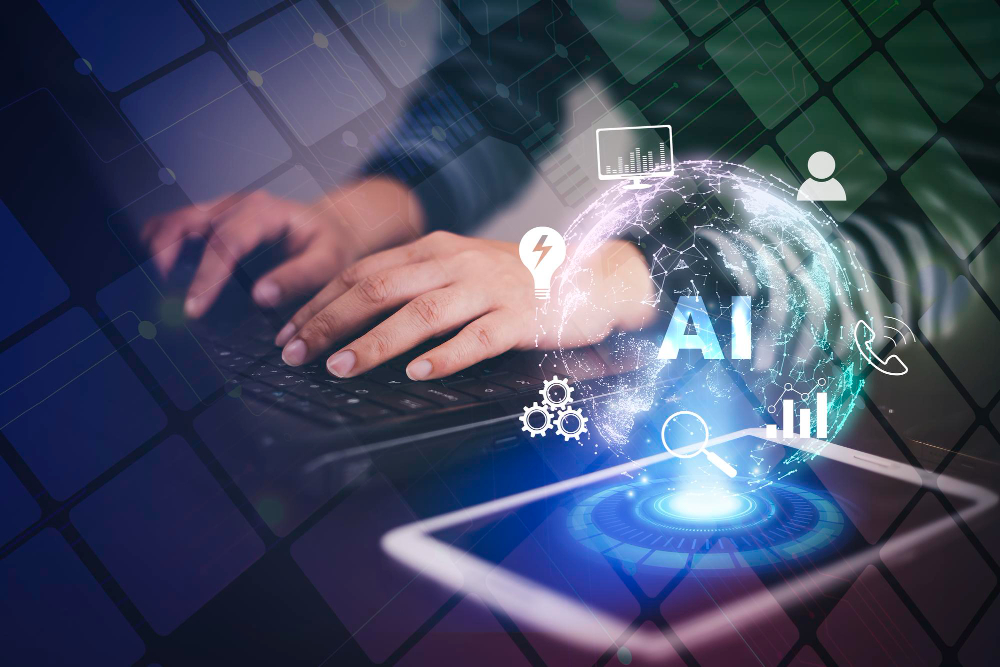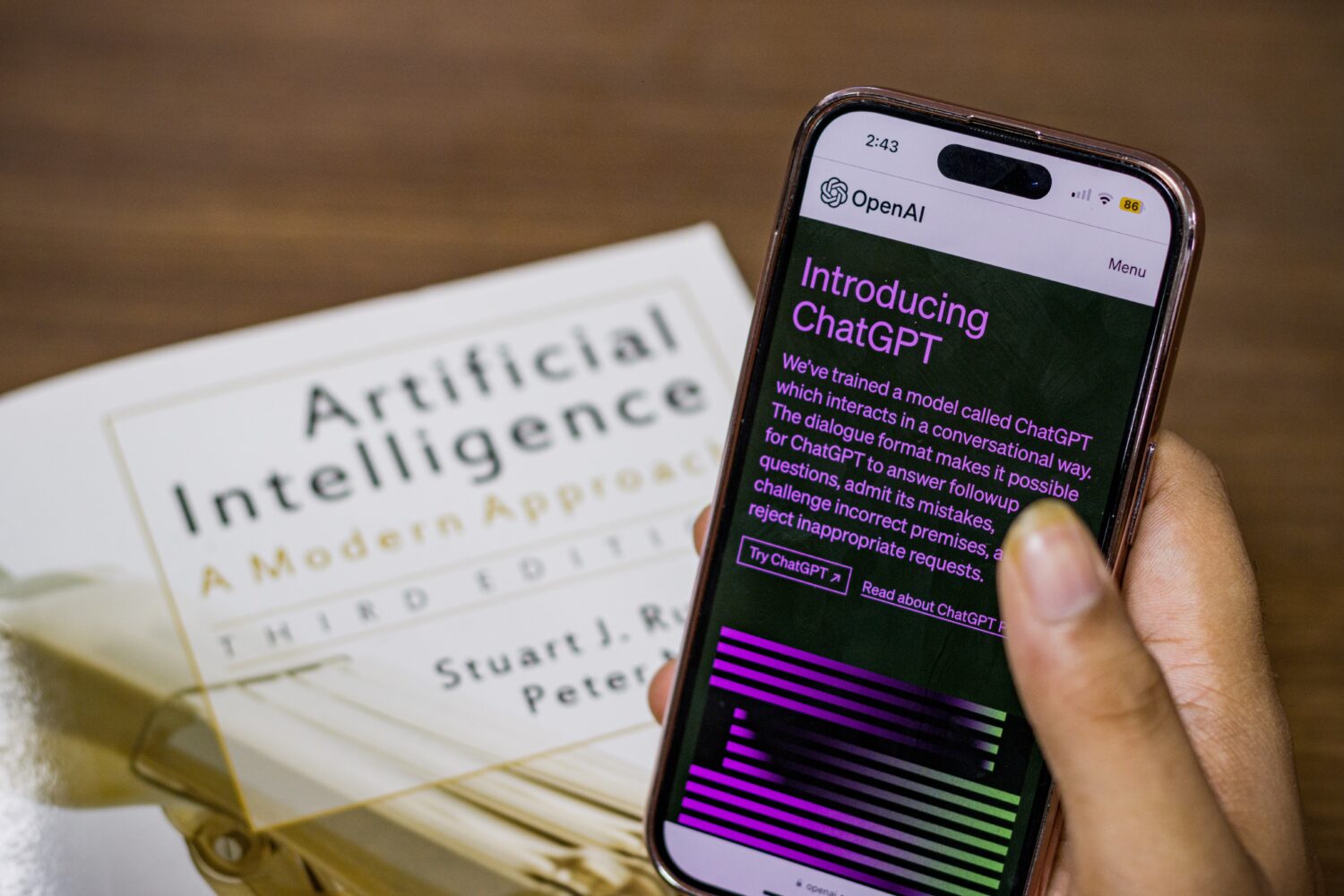Artificial Intelligence (AI) has since moved from an abstract concept or theory to actual practical usage. With the rise of AI tools like ChatGPT, Bard, and other AI solutions, more people seek knowledge on artificial intelligence and how to leverage it to improve their work.
AI has seen an increase in usage by individuals and organizations alike in various fields, including research and analysis, development, and other areas of work; it is expected annual growth rate of 37.3% between 2023 and 2030.
Broadly, AI can be broken down into three categories:
- Strong AI: AI that can come up with solutions to new world problems on its own are term as strong AI. This kind of AI can learn and apply knowledge to new cases.
- Weak AI: This kind of AI already has a predefined instruction set to solve given problems or tasks. They basically cannot operate out of this scope and could be classified as specialized AI; examples of this include self-driving cars and digital voice assistants such as Siri and Alexa.
- Super AI: This AI is still hypothetical. Its capability will surpass human intelligence, and it will be capable of solving complex problems not solvable by humans.
AI has many functions, and some of the common types of AI functionalities are predictive and generative AI.
This article will review these two concepts to help you understand how they work and why they matter.
What is Predictive AI?

Predictive AI is artificial intelligence that collects and analyzes data to predict future occurrences. Predictive AI aims to understand patterns in data and make informed predictions. It’s used in various industries such as finance to make informed financial discussions of possible expected profit and loss based on records, in healthcare to determine if a person’s health status is tilting towards an illness, and it can also be seen in fraud detection.
How does Predictive AI work?
For businesses to align themselves to the latest trends and market conditions to maintain an edge over competitors, they need to use historical data based on previous trends and events to forecast possible future occurrences. This gives organizations an edge to plan ahead of certain events to ensure maximum utilization of every market condition.

Enters predictive AI. It uses machine learning algorithms to analyze historical data and predict the future. These algorithms identify patterns and relationships between data to help businesses make informed and fast decisions. The steps in preparing this algorithm include the following:
- Collection and organizing data: This step deals with gathering data that needs to be analyzed. Ensuring that the data sourced is suitable for the task.
- Preprocessing: Raw data in itself possess little to no value. It is essential for this data to be filtered out and for abnormalities or errors to be taken out to ensure that only correctly formatted records are passed into the model.
- Feature and algorithm selection: The correct algorithm or model selection is essential to predictive AI. The result can only be accurate to the algorithm’s level of accuracy. After selecting the right algorithm, training it on specific features to detect is also essential to achieving the desired results.
- Model evaluation: After a successful algorithm process, evaluating the result based on a defined benchmark is essential to weigh the accuracy of the given results.
The accuracy of a forecast solely depends on the quality and relevance of the data feed to the algorithm and the level of sophistication of the machine learning algorithm. The Human expert involved in this process also plays an important role.
Benefits Predictive AI

Competitive advantages
One of the notable benefits of predictive AI to businesses is its ability to provide adequate forecast data to enable companies to plan ahead and maintain competitivity advantages over their competition. An adequate forecast of future occurrences helps companies to plan and maximize every opportunity.
Decision-making
Predictive AI help in fast-tracking the process of decision-making. In business, data backing for every decision made is very important. With predictive AI, companies can analyze data and simulate different scenarios to help them make the right decision with the available information.
Increase efficiency
An essential aspect of AI is to help increase and fast-track tasks that need a high level of accuracy. With the availability of adequate data and a high forecast accuracy, predictive AI helps reduce the number of repetitive tasks and does it with a high precision void of error. This helps increase the efficiency of individuals and businesses alike.
Limitations of Predictive AI
Data constraint
Predictive AI solely realizes the dataset for its analyses and predictions. Hence it has only as much knowledge as it is given. This could be very catastrophic in critical conditions where essential data and parameters are not factors in the given dataset and could result in predictions/forecast that is false.
Predictability of Nature
Not everything in nature has a pattern; certain things occur in different patterns over a long period, in the condition where predictive AI is used in forecasting such occurrences. It will create a false pattern that will lead to an output that cannot be proven.
Short span
Because predictive AI relies solely on data to continuously give a prediction, the previous prediction may have a short life span, especially in a condition where the data are being generated at a fast pace. Hence, running an analysis and continuously updating the model will be necessary.
Applications of Predictive AI
Financial service
Predictive AI plays a role in the early detection of financial fraud by sensing abnormalities in data. It can also be used by businesses to pull and analyze a wide range of financial data to enhance financial forecasting.
Marketing
Data is essential to understand any market trend and properly select the marketing channel that works best and yields more activities. With predictive AI, marketing records can be analyzed and presented in ways that help marketing strategists create campaigns that will yield results.
Weather forecasting
Forecasting of possible weather has become more accurate over time with the help of predictive AI. Industries such as aviation depend on weather conditions. This has helped boost operation efficiency and reduce the risk involved.
What is Generative AI?

Generative AI is a type of AI used to generate content based on prompts. This type of AI uses a combination of machine learning and deep-learning algorithms to come up with somewhat new content. Generative AI undergoes a series of dataset feeding, analyzing, and outputting results. This process is as follows:
- Data collection and preparation
- Model architecture selection and initialization
- Model training
- Evaluation and deployment
Unlike predictive AI, which is used to analyze data and predict forecasts, generative AI learns from available data and generates new data from its knowledge.
How does Generative AI work?
Generative AI leverages various learning models, such as unsupervised and semi-supervised learning to train models, making it easier to feed a wide volume of data into models to learn from. Generative AI analyzes these different datasets, figures out the patterns in the given data, and uses the learned patterns to produce new and realistic data.

Generative AI has several models, each with its use cases and capabilities. The most common model is:
#1. Generative Adversarial Networks (GANs)
Generative Adversarial Networks (GANs) are one of the unsupervised learning approaches in machine learning. GANs consist of two models (generator model and discriminator model), which compete by discovering and learning patterns in input data.
The two models work simultaneously, one trying to fool the other with fake data and the other ensuring that it is not fooled by detecting the original.
As the name implies, generative means generating, and adversarial means training a model by comparing opposite data. GANs can be applied in various areas such as image synthesis, image-to-text generation or text-to-image generation, etc.
#2. Variational Autoencoders (VAEs)
Variational Autoencoders (VAEs) are a generative model based on an autoencoder. These autoencoders consist of two networks: the encoder and decoder network.
The encoder takes in the input sample and converts the information into a vector, then the decoder takes the vectors and converts them back to an output. The vector serves as a representation of the input sample data, which is understandable by the model.
Let’s take, for example, To train a generative model to detect a dog. We will feed the autoencoder with samples of dog images, and the encoder will then take the sample and convert various data into vectors to serve as a representation of the image and then convert the data back to the image. It is important to know that the autoencoder cannot generate data independently.
That is where the variational autoencoder comes to play. VAEs create a pool of the same sample data and, based on that data, which has been encoded to a similar vector pattern, the decoder can take the vector and adjust certain values slightly to create a different and realistic sample.
#3. Diffusion model
The diffusion model is a generative model that destroys sample data by adding successive Gaussian noise. Then the models learn to recover the data by removing the noise from the sample data. The diffusion model is widely used for image generation; it is the underlining tech behind services like DALL-E, which is used for image generation.
Performance Measurement – Generative AI

For technology such as generative AI, it is essential to have a performance measurement factor to weigh the success of a given model and result. Some of the key requirement that should include:
Accuracy and quality
An essential quality of a model is to produce a qualitative output. For example, a text-to-image generation model that generates a poor image already defeats the aim of the model. The model output should have very close similarities to the real data.
Speed
Time is essential. The time needed to train a model and required by the model to output a realistic output is a key performance factor. Suppose a model fails to produce output in a record time compared to a human’s output. Then the model has little advantage. Hence the time complexity of the model must be very low to produce a quality result.
Amount of adjustment needed
In addition to speed, the amount of fine-tuning required before a result is produced is also essential to determine the performance of a model. If the developer requires a lot of effort to create a desired customer expectation, it indicates that the model is not ready for real-world use.
Benefits of Generative AI

There are several benefits involved in using generative AI; in this selection, we will cover some of the benefits.
Increased efficiency
Automation of tasks can be made possible with AI. Generative AI can generate content faster than humans. Making the task of content creation faster and easier. This help boosts the productivity of teams by helping them accomplish more task within a limited time.
Economical
With AI technology like generative AI, businesses can save money by automating some repetitive tasks, hence reducing the need for manual labor. It also helps companies with the cost of hiring a content creator for image, audio, or video production.
Increased creativity
Generative AI can be used for generating aesthetically pleasing content. Generative AI models have been trained with various data, and it is easier for them to generate creative content compared to that human labor.
Improved decision-making
The decision-making process can be made faster with the use of generative AI; Businesses can use generative AI to generate data that could help them fast-track the process of decision-making given businesses an added advantage to capture their customer and improve the customer experience.
Drawbacks of Generative AI
Ethical concerns
The use of generative AI could lead to concern regarding the ownership of generated content. There are also concerns about the generation of inappropriate or biased content. Since these models are only limited to the amount of data given, this could lead to serious issues.
Training data-dependent
Generative AI models do not have a mind of their own. Hence, these models are limited to only the data provided; in conditions where the dataset used in training this model is inaccurate or lacks merit, it could lead to biased content or error-prone results.
Misuse and misinformation
In recent times, with the development of more tools that leverage generative AI capabilities, fake images of popular figures created or fake songs released that were generated with AI have been on the rise. Generative AI could be used to create this fake content and exploit people.
Applications of Generative AI
Code generation and interpretation
Generative AI has played a big part in this aspect. With tools like ChatGPT, developers can test their codes, paste error prompts from development, and get an in-depth understanding of the error and possible solutions. Developers could also give instructions and get sample code for implementation.
Chatbots/virtual agents
Customer service inquiries are mostly handled using chatbots in today’s business world, unlike previously when humans were involved. With generative AI, bots could be trained to handle customer inquiries and process solutions without the involvement of humans.
Content generation
Generating realistic content, music, video, images, etc., is achievable through generative AI to create realistic output from a given pattern of samples, making the process of creating new content easier and faster.
Predictive AI vs. Generative AI

Generative AI is used to create new content, using deep learning and machine learning to generate content. It is used in creating content such as images, music, text, and more.
In comparison, predictive AI is centered around analyzing data and making future predictions from historical data. Predictive AI uses algorithms and machine learning to analyze this data and detect patterns to use for possible future forecasts.
Both generative AI and predictive AI use machine learning, but how they yield results differs. While one creates data, the other simulates results. Hence, generative AI is widely used in industries that involve the creation of content, such as music, fashion, and art.
In contrast, predictive AI is used in industries where data analysis is largely done, such as finance, marketing, research, and healthcare.
| Feature | Generative AI | Predictive AI |
| Creates new content | ✅ | ❌ |
| Analyzes data | ❌ | ✅ |
| Uses machine learning | ✅ | ✅ |
| Simulates results | ✅ | ❌ |
| Industries used in | Music, fashion, art | Finance, marketing, research, healthcare |
Conclusion
With more innovation in the AI space, we expect that predictive AI and generative AI will see more improvement in reducing the risk of using these technologies and improving opportunities. We will see the gap between predictive and generative AI algorithms close with more development, enabling models to easily switch between algorithms at any given time and produce the best result possible.

